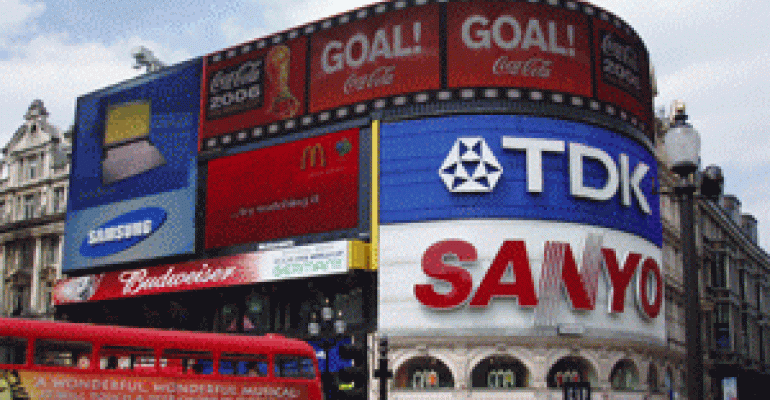Some retailers spend years waiting for an opening on a coveted High Street or in a class-A shopping center where location is critical to entering a new international market. When those spaces turn over, it can be a bidding war with space going for two or even three times the current market rate.
“All of these retailers are suddenly looking for space on the same premier streets, and that is a recipe for too much demand and not enough supply,” says Ann Natunewicz, national manager for retail research at Colliers International in Washington, D.C.
Luxury retailers in particular are targeting the premier High Streets such as Fifth Avenue in New York, Ginza in Tokyo or the Avenue des Champs Elysées in Paris. Demand for High Street frontage has held up throughout the global recession. “There were opportunities for retailers to make moves in many of the urban markets, but we really saw very little weakness in the rental levels in many of these key markets,” says Gene P. Spiegelman, executive vice president at Cushman & Wakefield in New York.

In fact, High Street rents in many of the top international markets are back to pre-recession levels. High Street rents among 278 locations around the globe increased by an average of 4.8 percent during the 12-month period from June 2010 to June 2011, according to Cushman & Wakefield.
In some markets, such as Shanghai, the shortage of High Street space is prompting some retailers to look at other options in transitional neighborhoods where real estate is less expensive and more readily available. “Depending on what your brand is, you may not want to be on the High Street with all of the couture,” says Natunewicz. “So, those alternative locations might actually work out better for some retailers.”
Creating new supply
Developers and investors are working to create new real estate opportunities to satisfy the growing global demand. China is the clear leader in new construction. In fact, the four busiest markets in the world for new retail construction last year were all in China. Shenyang was the most active market for new development in 2011 with 10.76 million sq. ft. of new retail space completed. Tianjin is the current leader with 25.8 million sq. ft. of space underway.
But while international retailers have expanded in top Chinese markets like Shanghai and Beijing, much of the construction that is occurring in secondary markets such as Shenyang, Wuhan and Chengdu. But the smaller markets are attracting mainly local and regional retailers.
The booming casino market in cities such as Macau and Singapore is creating desirable new venues for international retailers. Developers are following the Las Vegas model of building mega resorts with hotels, casinos and retail. “Developments like that are gaining success on a global basis, and they also add to the global retail footprint,” says Spiegelman. For example, the Marina Bay Sands opened in Singapore in 2010 with 2,560 rooms and suites, restaurants, shops, theaters, a museum and a casino. The Shoppes at Marina Bay Sands spans more than 2.6 million sq. ft. of restaurant and retail space, and is home to stores ranging from Adidas and Burberry to Swatch and Yves Saint Laurent.
The number of new retail centers under development in Europe remains fairly limited. One example is the 4.58 million-sq.-ft.Valdebebas Shopping Center in northeast Madrid, which is expected to open in 2015 with an international roster of tenants. The Westfield Group also is planning to build a major shopping center outside of Milan. Westfield has acquired the site as part of a joint venture with Italy-based Gruppo Stilo. The tentative plan is to develop a 1.89-million-sq.-ft. center that would be completed in time for the Milan World Expo in 2015.
High Street space rents for a premium for good reason. The supply of new space is limited. However, there is a continuous effort to redevelop and refurbish that existing space. The Crown Estate in London, for example, has been diligent in its efforts to reposition large blocks of Regent Street from Piccadilly Circus to Oxford Street. Robson Street in Vancouver is another High Street that has had success with its infill efforts and has attracted new tenants such as J.Crew, CB2 and Forever 21.
Oftentimes, the key to landing prime international locations is being flexible and able to adapt store prototypes to fit the available space, adds James Dolphin, head of EMEA Retail at Jones Lang LaSalle in London. Some countries have very strong High Streets and/or high-performing centers. “One size doesn’t fit all,” he says. “The most successful launches are from those companies who have different brands under their umbrella and can adapt to the different markets.”
The questions of how to navigate real estate issues when entering new markets will be discussed at the Global Retail Panorama and Outlook for Global Retail Real Estate sessions at the ICSC Retail Real Estate World Summit.

